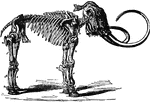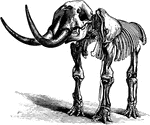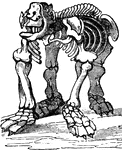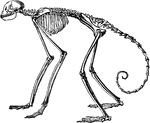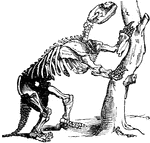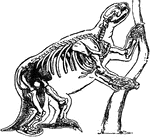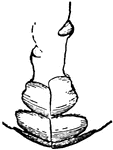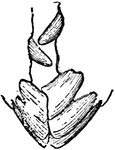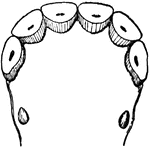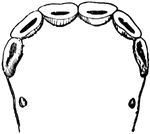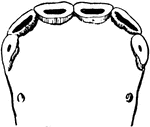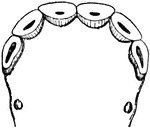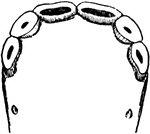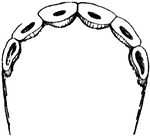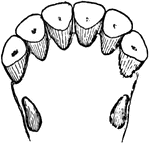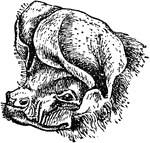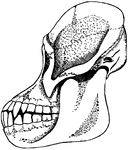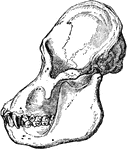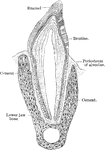The Mammal Anatomy: Skeleton ClipArt gallery provides 277 views of bones, teeth, and skeletal system of various mammals.

Kangaroo Pelvis
An illustration of a kangaroo pelvis. "M, marsupial bones, borne upon P, pubis; Il, ilium; Is, ischium;…

Leg of Ox
This illustration shows the leg of an Ox. P. Pelvis, FE. Femur, TI. Tibia, FI. Fibula, TA. Tarsus, MT.…
Horse Leg
External view of bones of right carpus, metacarpus, and digit of a horse. 1, distal end of radius; 2,…
Horse Leg
External view of bones of left tarsus, metatarsus, and digit of a horse. Labels: 1, distal end of tibia;…
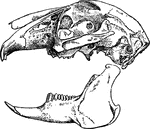
Lepus Timidus
"Terrestril Rodents, with imperfect clavicles, elongated hind limbs, short recurved tail, and long ears.…

Chimp Limb
The forelimb of chimpanzee. (c) collar bone; (s) shoulder blade; (h) humerus; (r) radius; (u) ulna;…
Chimp Limb
The hindlimb of chimpanzee. (i) innominate bone; (f) thigh bone; (t) tibia; (s) fibula; (r) bones of…
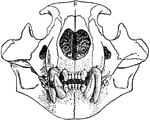
Lion Skull
"The internal structure of the lion, except in slight details, resembles that of the other Felidae,…

Skeleton of the Mammoth
"Mammoth is a species of extinct elephant, the fossil remains of which are found in European, Asiatic…

Mandible of a Rabbit
Lateral half of mandible of a rabbi, opened to show the arrangement of rodent teeth.

Mastodon
"Mastodon is an extinct genus of proboscideans, closely allied to the true elephants. The genus ranged…

Mastodon
A genus of elephants now extinct, and of which fossil remains occus in America as late as the Post Pliocene…

Mastodon
Mastodons or Mastodonts are members of the extinct genus Mammut of the order Proboscidea and form the…

Megatherium
"Megatherium is a genus of extinct edentates, founded on a nearly complete skeleton discovered on the…

Megatherium
This is a skeleton of the Megatherium. Megatheria were a group of elephant-sized ground sloths that…
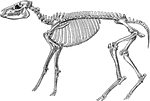
Skeleton of a mesohippus bairdi
"Skeleton of Mesohippus bairdi, the three-toed ancestor of our horse. This animal was about the size…

Mesotherium Cristatum
"Cranium and lower jaw of Mesotherium Cristatum." —The Encyclopedia Britannica, 1903
Metatarsus of a Horse
Posterior view of left metatarsus of a horse. 1, Large metatarsal bone; 2, Internal small metatarsal…
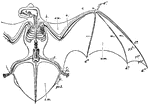
Noctule Bat
"Skeleton and volar Membranes of the Noctule Bat. c, clavicle; h, humerus; r, radius; u, ulna; d1, first…

Nostriils of a Horse
Cartilaginous framework of the nostril-seen from above. Labels: a, right alar cartilage; a', left alar…
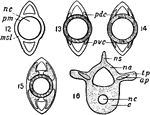
Development of the notochord
"Development of notochord : msl, mesoblastic skeletogenous layer ; pdc, paired dorsal cartilage; pvc,…

Pelvis of a Horse
Left posterolateral view of a horse's pelvis. 1, anterior iliac spine; 2, Posterior iliac spine. The…

Perissodactyle
"Bones of the fore foot of existing Perissodactyle. Tapir (Tapirus indicus)." —The Encyclopedia…

Perissodactyle
"Bones of the fore foot of existing Perissodactyle. Rhinoceros (Rhinoceros Sumairensis)." —The…

Permanent Dentition
"Milkand permanent dentition of upper (I) and lower (II) jaw of the dog, with the symbols by which the…

Phalanges of a Horse
Posterior view of phalanges of a horse disarticulated. Labels: a, os suffraginis; b, os coronae; C,…
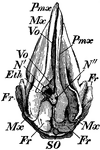
Physeter macrocephalus Skull
A sperm-whale (Physeter macrocephalus) or cachalot (French). A, top view of a fetal sperm-whale skull.

Platypus Skull
The platypus is a small, half-aquatic mammal endemic to the eastern part of Australia, and one of the…
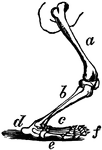
Polar Bear Leg
The polar bear, Plantigrada, is part of the subdivision Carnivora, which includes other carnivorous…
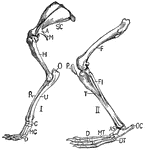
Rabbit Limbs
"Fore-limb and shoulder-girdle (I.) and hind-limb (II.) of rabbit. SC., Scapula; A., acromion; M., metacromion…
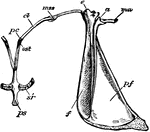
Rabbit Shoulder Girdle
"Lepus cuniculus. Shoulder-girdle with anterior end of sternum of young specimen. a, acromion; af, pre-scapular…

